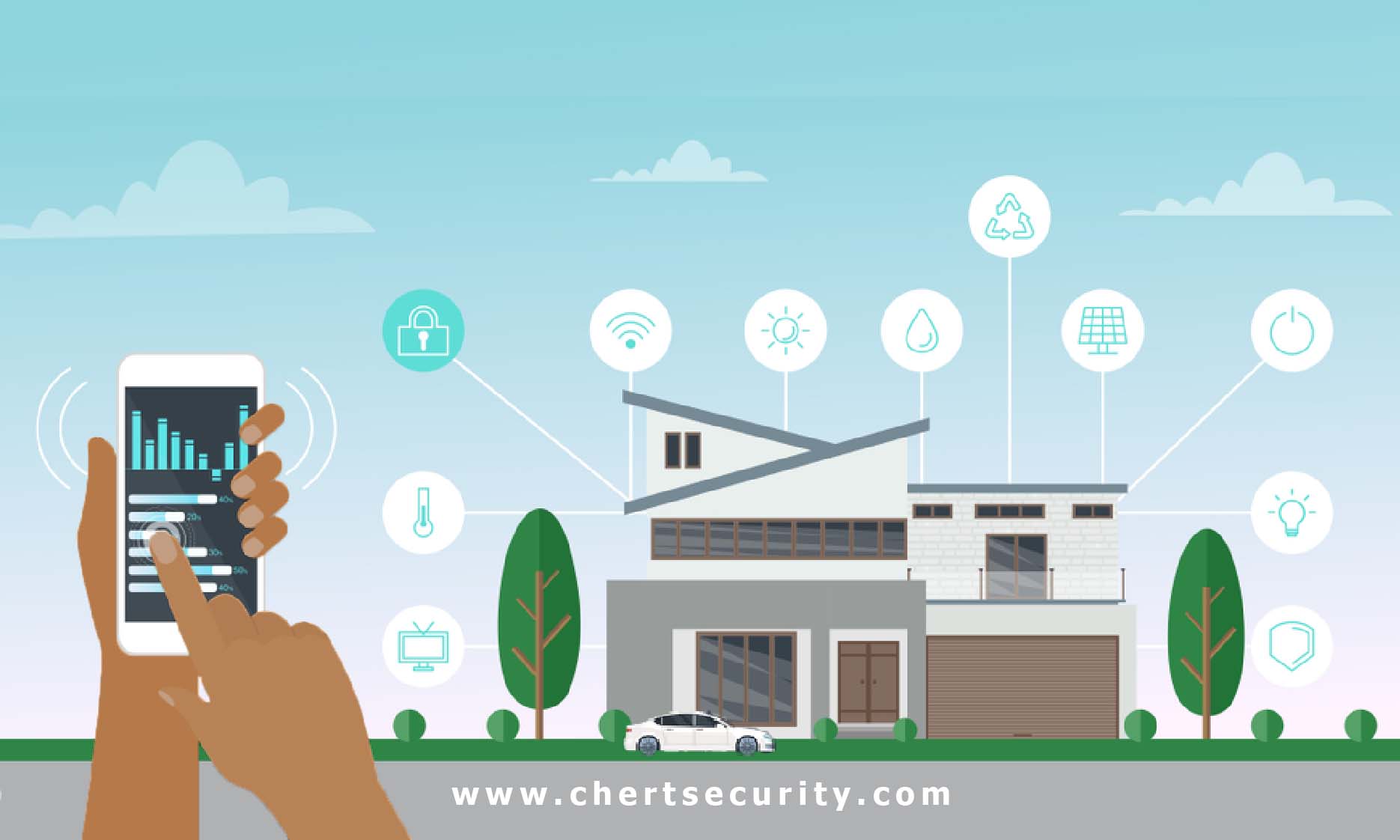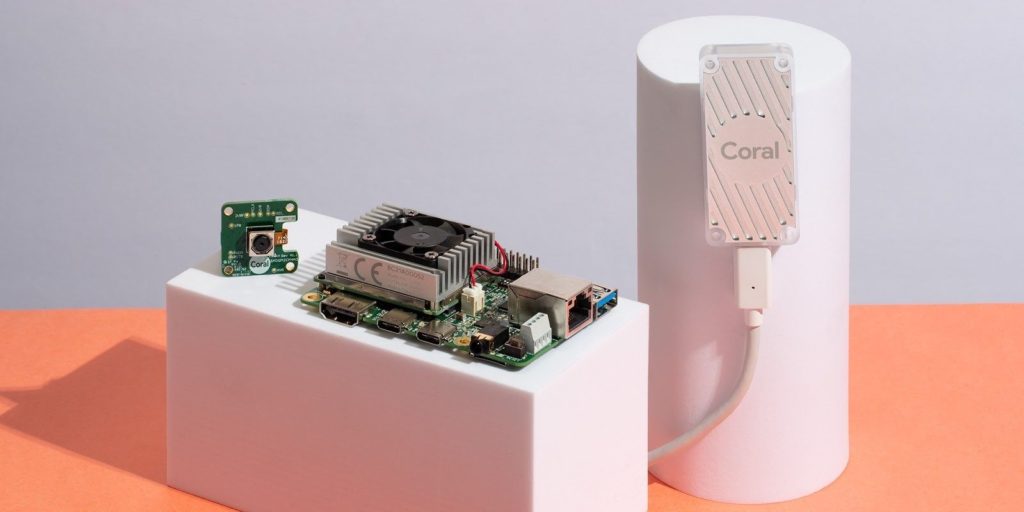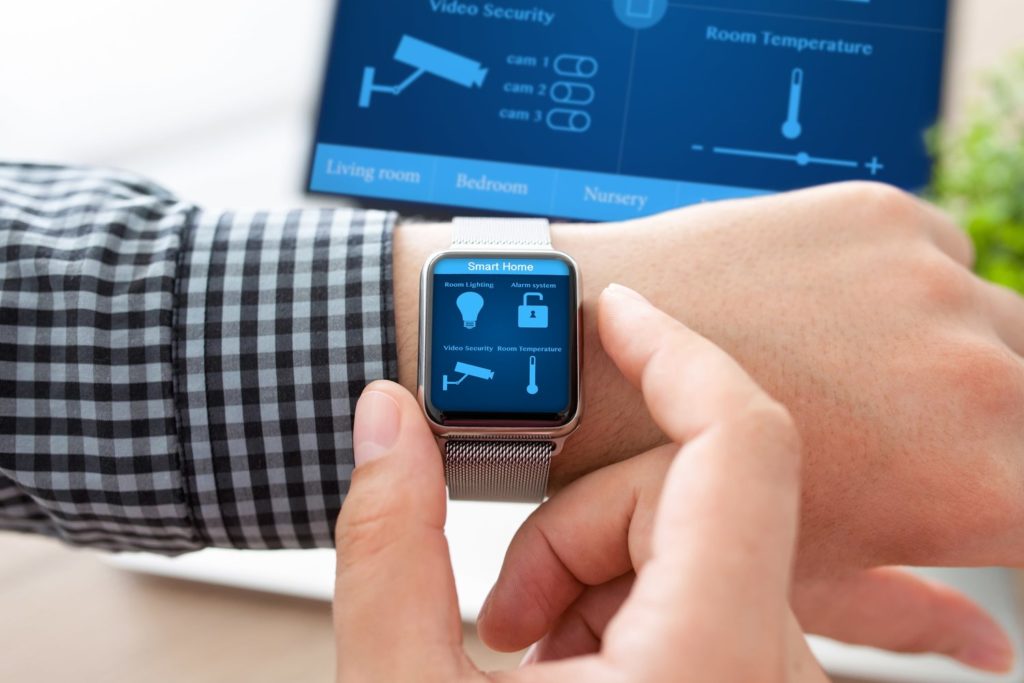
VULNERABILITIES ASSOCIATED WITH SMART HOMES
Smart homes are designed to have household devices provide and deliver services needed for an efficient to function with minimum human intervention. This application of the Internet of Things (IoT) is similar to smart transportation, smart healthcare, smart logistics and other areas of technology designed to minimize input needed from humans. Smart homes are made up of a cluster of different smart IoT devices, functioning as a single unit to automate everyday events. They may be made up of IoT devices such as Smart Tv, Smart Media boxes (DSTV Explora), Smart lightbulbs, Cameras, Smart Lock, Thermostat, Alarm system, Voice assistants, Game consoles and more. However, just like any application which processes and manages data, threats leading to vulnerabilities are a constant issue. All the devices need to be connected to a network to provide the required services. Today, two out of five (40.3%) digital households worldwide have five or more devices connected to the internet and 6% have more than ten devices connected to the internet.
In this post, we will look into vulnerabilities associated with a smart home:
HARDWARE VULNERABILITIES: IoT devices are embedded devices, which makes them dependent on their hardware. Smart homes can be attacked remotely and physically by access to the system hardware. Vendors face challenges and new threats because of new hardware. The rapid technology advances in wireless sensor technologies has resulted in newer devices, which lead to new issues. Hardware vulnerabilities are grouped into two classes: invasive and non-invasive
- Invasive: an invasive attack needs physical engagement with the device, which could result in the destruction of the device.
- Non-invasive: this attack does not need physical engagement with the devices to cause destructive damage; it can be executed both passively & actively.
Invasive and non-invasive attacks are regarded as “side channel” attacks, which leverages data leakage in an IoT environment. This attack is based on data that is produced from the devices and transmitted in an IoT system. Attackers use side channel attacks to target IoT devices possessing high computing power but with limited data protection capabilities. Consequently, attackers will be able to obtain sensitive private data for malicious use.
Types of side channel attacks.
- Power-analysis attack: this type of attack is a big concern and a very powerful type of side-channel attack. This attack is regarded as a non-invasive and passive attack because the attacker only needs to measure the power consumption of a smart home device without manipulating the device itself. This type of attack exploits the relationship between power being consumed by the device and the assumption that every instruction has its unique power consumption. The attacker performs a cryptographic operation and monitors the device, then carefully studies the power consumption to determine the sequence of instructions performed by the device and if these operations relate to the secret key that was involved in the cryptographic operation, the attacker can obtain the secret key.
- Timing-Analysis: this comprises of methods for analyzing data in order to extract meaningful statistics. This can be used to model the events leading to prediction of future events to be performed in a smart home based on previously observed values in smart devices. This technique is useful for obtaining information related to all events performed in a smart home.
- Tampering: one of the features of smart homes includes recording consumption of electricity of applications in the home. These recording are conducted using smart meters. Attackers use side-channels attacks to gather information needed from smart meters to tamper with the meter, thus making the consumer receive a false reading of utility bill.

Google Coral Platform for building IoT hardware
SOFTWARE VULNERABILITIES: the user interacts with the IoT devices via an application to monitor events and send commands to execute events. Just as the hardware of IoT devices are subjected to threats, the same thing is also true of the software aspects. Generally, IoT devices are based with web interfaces which are suited for convenience and robustness. In present day, the most common vulnerabilities are SQL Injection(5.61%), Code execution(5.61%), Obtain Information(13.64%), Overflow(11.76%), Denial-of-Service(32.89%), Restriction Bypass (6.68%), and Privilege Escalation(5.61%).
- Cross Site Scripting (XSS): this is an injection attack which attackers use to insert a client-side script such as java to tamper with the web interface used to interact with the IoT devices in the IoT environment, triggering unwanted behavior and actions in the system. XSS gives an attacker the ability to completely change the content of the application.
- Denial-of-Service: this is an attack in which floods the IoT application with multiple requests that it cannot handle, thus making its service inaccessible to the users. Attackers use this to render an IoT application dormant. This happens most often because of users failing to change default passwords, or authenticating requests directed to the application.
- SQL Injection: this is a type of attack in which attackers inject SQL commands into the application to execute commands or bypass user restrictions. Poor application development makes this vulnerability exploitable by attackers.

IoT Watch
A table of some smart devices and their vulnerabilities
| Smart System | Attack Objectives | Vulnerabilities |
| Smart Tv | To take control
To discover content being watched |
Software attacks
Hardware attacks Denial of Service |
| Network | To discover home activity | Spoofing attacks
Buffer overflow Rogue Access point Attacks against the core network |
| Smart locks | To access homes | Handshake key leakage attacks
Owner account leakage attacks |
| Smart meter | To discover in home activity
Occupancy detection |
Traffic analysis Power-analysis attack Man-in-the-middle |
There are many vulnerabilities exploited worldwide in smart homes. 40.8% of smart homes worldwide have at least one vulnerable connected device that puts the entire smart home at risk. 31.8% of these vulnerable devices are currently at risk due to unpatched software vulnerabilities, and 69.2% are vulnerable due to weak security credentials.
If you would like to know more or require IoT security infrastructure solution, you can reach out to us at enquiries@chertsecurity.com.



